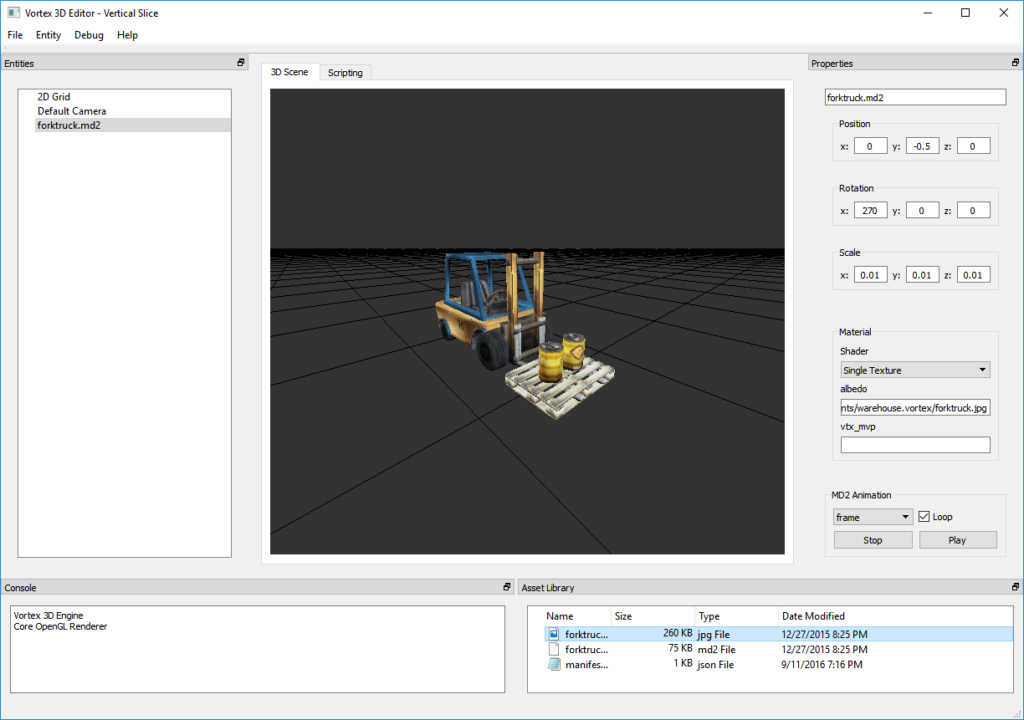Reaching Feature Parity
Last week work continued on different parts of the Editor. As the new renderer falls into place, I’ve been going through the Editor code, finding scaffolding and other legacy code pieces that were built to make the Editor originally work with the 2011 renderer, but that were disabled as part of the renderer update process.

As I was working on the Editor, I was careful to have a clearly defined separation between Editor code and Engine code. This helped keep the impact of swapping out the renderer for a new one limited to a single C++ file.
Changing the renderer, however, did bring a fair share of feature regressions to the Editor, as some semantics had changed in terms of where entities need to be registered to have them drawn and how the UI controllers inspect their components.
Today, after several fixes here and there, I’ve been able to load a scene that had been serialized using the old Editor and have its entities displayed in the 3D World. This is good confirmation that the Editor is reaching a stable point with feature parity to what we had a few months ago when we decided the rewrite the renderer.
Working on both the Editor and the Engine is and has been an amazing experience. In next week’s post, as a way to wrap up year, I’m going to break down a few of the lessons learned. Stay tuned for more!